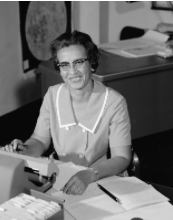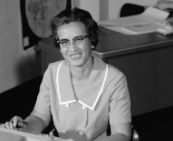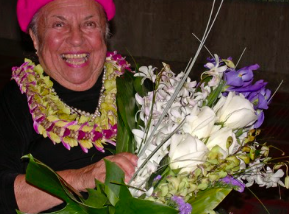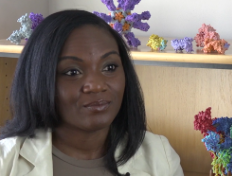Women in science face an uphill battle in every way. From being passed over for grants, tenure, or program acceptance to dealing with sexual harassment from peers, women entering fields of science may feel like they face a Sisyphean challenge. However, they are contributing to the progress even if it only feels like claiming an inch of ground at a time. For this reason, we would like to celebrate and elevate some of the women scientists over time and into today who have made or are making significant and far-reaching discoveries that improve and affect all of our lives on a daily basis.

Photo Credit: “Katherine Johnson, Mathematician” by US Department of State is licensed under CC BY-NC 2.0
Katherine Johnson (1918-2020)
If it hadn’t been for the book and then movie Hidden Figures, Katherine Johnson’s story would most likely never have been known beyond NASA’s community. But fortunately, Margot Lee Shetterly would not let that happen. Johnson was born in West Virginia where her mathematical prowess was recognized early. She skipped grades and made quick work of the math curriculum at the historically Black West Virginia State College. She was chosen by the college president to be one of three Black graduate students to integrate West Virginia University. She was the only woman chosen. =
She went on to work for the agency that would become NASA doing computing for the guidance and navigation department at Langley’s Research Center. She faced both racism and sexism. In an interview with WHRO in 2011, she explained, “I just happened to be working with guys and when they had briefings, I asked permission to go. And they said, ‘Well, the girls don’t usually go.’ and I said, ‘Well, is there a law?’ They said, ‘No.’ So then my boss said, ‘Let her go.’ ”
Johnson was known for her reliable calculations, so much so that astronaut John Glenn had her hand check computer orbital equations before he would agree to go into space. He trusted her calculations more than the computer because they were prone to blackouts and other issues. According to an NPR article, “If she says they’re good then I’m ready to go.”
As time moved on, Johnson completed calculations for the first moon landing and then later, the space shuttle missions. In 2015, President Obama presented her with the Presidential Medal of Freedom.
Sara Little Turnbull (1917-2015)
Sara Little Turnbull was a designer who had an outsized influence on modern product development. While she began her career as an editorial assistant at House Beautiful, she was trained at Parsons School of Design. After writing an article where she opined that designers were designing for wholesalers and retailers rather than the women who would be using the products, her career took off. Executives at 3M, Corning, General Mills, and Procter & Gamble hired her to help them develop and design products. She traveled the world taking inspiration from both the natural world and other cultures.
At 3M, they had developed a new non-woven material and wanted Turnbull to develop a bra using the material. While she did develop the bras, she recognized many other uses for the material including developing a prototype for a disposable molded medical mask with elastic straps and a nose clip. Sound familiar? While the original material could not trap enough pathogens for medical use, it did become the N95 mask that workers used in trades to keep dust out of their faces for decades. With new materials and technology, in 1995, the mask became the medical-grade N95 mask that we all know about today. We can thank Sara Little Turnbull for creating a product that has saved millions of lives worldwide during the pandemic.
Kizzmekia “Kizzy” Corbett
Kizzmekia Corbett, Ph.D. is the scientific lead for the Vaccine Research Center of the National Institute of Health’s Coronavirus team. A North Carolinian born and bred, Corbett has always had a passion for science. In high school, she spent her summer break working at the UNC Kenan Labs research laboratories. According to her Time 100Next profile, “She and her colleagues have been central to the development of the Moderna mRNA vaccine and the Eli Lilly therapeutic monoclonal antibody that were first to enter clinical trials in the U.S. and now have authorization for emergency use.” A North Carolinian born and bred, Corbett has always had a passion for science. In high school, she spent her summer break working at the UNC Kenan Labs research laboratories. She holds a B.S. for University of Maryland Baltimore College and earned her Masters and Ph.D. degrees from the University of North Carolina.
In recent months, Corbett has become a prominent figure in the nation’s conversation over vaccine safety. In particular, her efforts to assuage fears in the Black community earned praise from Fauci, the nation’s lead infectious disease expert. According to Corbett, “Vaccines have the potential to be the equalizer of health disparities, especially around infectious diseases. I could never sleep at night if I developed anything — if any product of my science came out — and it did not equally benefit the people that look like me. Period.”
 Anna Lynch is a “writer, educator, and champion for all things women.”
Anna Lynch is a “writer, educator, and champion for all things women.”



There are no comments
Add yours